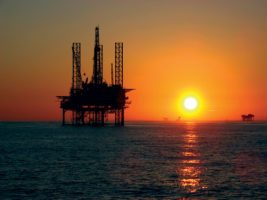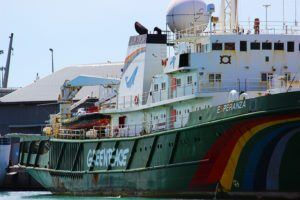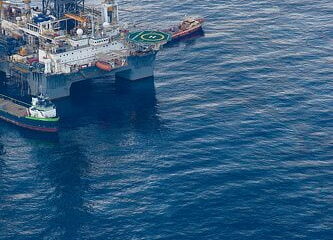

Energy
BP refuses to disclose risks of deepwater gamble in the Great Australian Bight
BP’s refusal to disclose details of its plan to drill for oil in the Great Australian Bight (GAB) from October 2016 has come under fire from investor groups and conservationists ahead of the company’s AGM that was held on 14 April.
The GAB is an area of exceptional marine significance on the coastline of South and Western Australia, which hosts a wide range of threatened and endangered species. Scientific studies suggest that 85% of its host species are unique to the GAB.
BP has failed to disclose its Environmental Plan for the project, which was rejected by Australia’s National Offshore Petroleum Safety and Environmental Management Authority (NOPSEMA). The reasons for its rejection have also not been disclosed. The company has also not disclosed the exact locations to be used, or the timeline for drilling. Both factors could have a significant effect on the risk and impact of an oil spill.
BP’s failure to provide this information to its shareholders and the wider public has led investor group ShareAction to express concern that this project represents a high risk, high cost gamble which BP is not in a position to take.
The lack of transparency is one of numerous financial risks associated with the project which are outlined in a briefing produced by ShareAction and The Wilderness Society. The briefing points out the high associated infrastructure costs of the project, which have led to an estimated average break-even barrel price of $104. BP has stated publicly its objective for projects to break even at $60 per barrel.
The briefing also questions the viability of the project in light of the COP 21 agreement to limit rises in global temperatures to ‘well below 2°C, with an ambition for 1.5’, and the increase in regulation likely to accompany this. BP’s reporting against the shareholder resolution on climate risk, passed last year, is weak. The company has not disclosed a business plan for a transition to 2°C, and continues to forecast demand scenarios of 4-6°C. The 9bn barrels of oil estimated in the Bight, if burnt, would produce almost eight times Australia’s annual GHG emissions. This will raise questions among investors about BP’s commitment to meaningful action on aligning its business strategy with a 2°C scenario.
The proposed 20% increase in BP CEO Bob Dudley’s pay this year continues to suggest that executive incentives are aligned with the pursuit of high-risk, high-cost exploration projects such as the Bight.
This month marks the six year anniversary of the Deepwater Horizon oil spill – the largest in US history, which cost BP $53bn. Parallels between the 2010 spill and the proposed GAB project are significant. The Bight is another exploratory deepwater project – meaning drilling conditions and extraction are challenging and risky. Like the Gulf of Mexico, the Bight is economically reliant on tourism and ocean industries. An oil spill would be extremely costly to the company. But BP’s refusal to disclose its Environmental Plan which is expected to cover such scenarios, makes it impossible for investors to assess BP’s ability to deal with another spill.
Catherine Howarth, Chief Executive of ShareAction said: “By pressing ahead with exploration in the Great Australian Bight, the company appears tone deaf to the shift in investor sentiment on climate risk following the Paris agreement. Investors in BP overwhelmingly voted last year in favour of smarter environmental risk management within its corporate strategy. These plans to drill for oil in the Bight raise a big red flag for investors who are already demanding answers about how BP can justify the project.”
Juliet Phillips, Campaigns Officer at ShareAction said: “BP’s decision to go ahead with this controversial high-cost, high-risk deepwater drilling in the Great Australian Bight must be challenged by investors. By refusing to disclose highly relevant information about the risks associated with Bight project, the company is failing in its responsibility to its shareholders. BP simply can’t afford the prospect of a Macondo-like oil spill in an area of such marine significance.”
Professor Robert Bea, University of California-Berkeley professor and consultant to the White House commission that investigated the Deepwater Horizon explosion said: “The available documents do not provide sufficient information to determine if BP has properly assessed the risks with particular attention to the Loss of Well Control hazard and provided safeguards that assure that the risks have and will be managed to be ALARP (As Low As Reasonably Practicable). The requirements are clear. It is up to BP to prove, using validated risk and assessment management processes… that the proposed exploitation of the GAB public resources meet these risk requirements.”
Lyndon Schneiders, Director of Campaigns at The Wilderness Society said: “BP has no right to risk the Great Australian Bight. It is an environmentally pristine area, a haven to a plethora of rare species, and given its remote location and dangerous weather patterns, is an extremely risky location for deep-water oil drilling. The project is facing investigation by the Australian Senate, but the company has disclosed neither its Environmental Plan nor the reasons for its rejection by the authorities. Investors in BP should be aware of the significant international opposition to this proposal, as well as the multiple financial risks.”


 Features9 months ago
Features9 months agoWhat is the Eco-Friendliest Option to Wash Your Dishes?

 Environment12 months ago
Environment12 months agoBuilding a Career in Green Construction: Tips and Insights

 News11 months ago
News11 months ago5 Ways Fleet Maintenance Software Can Help Businesses Be More Eco-Friendly

 Features10 months ago
Features10 months agoAddressing Pressing Ethical Concerns with Crypto Exchanges





















